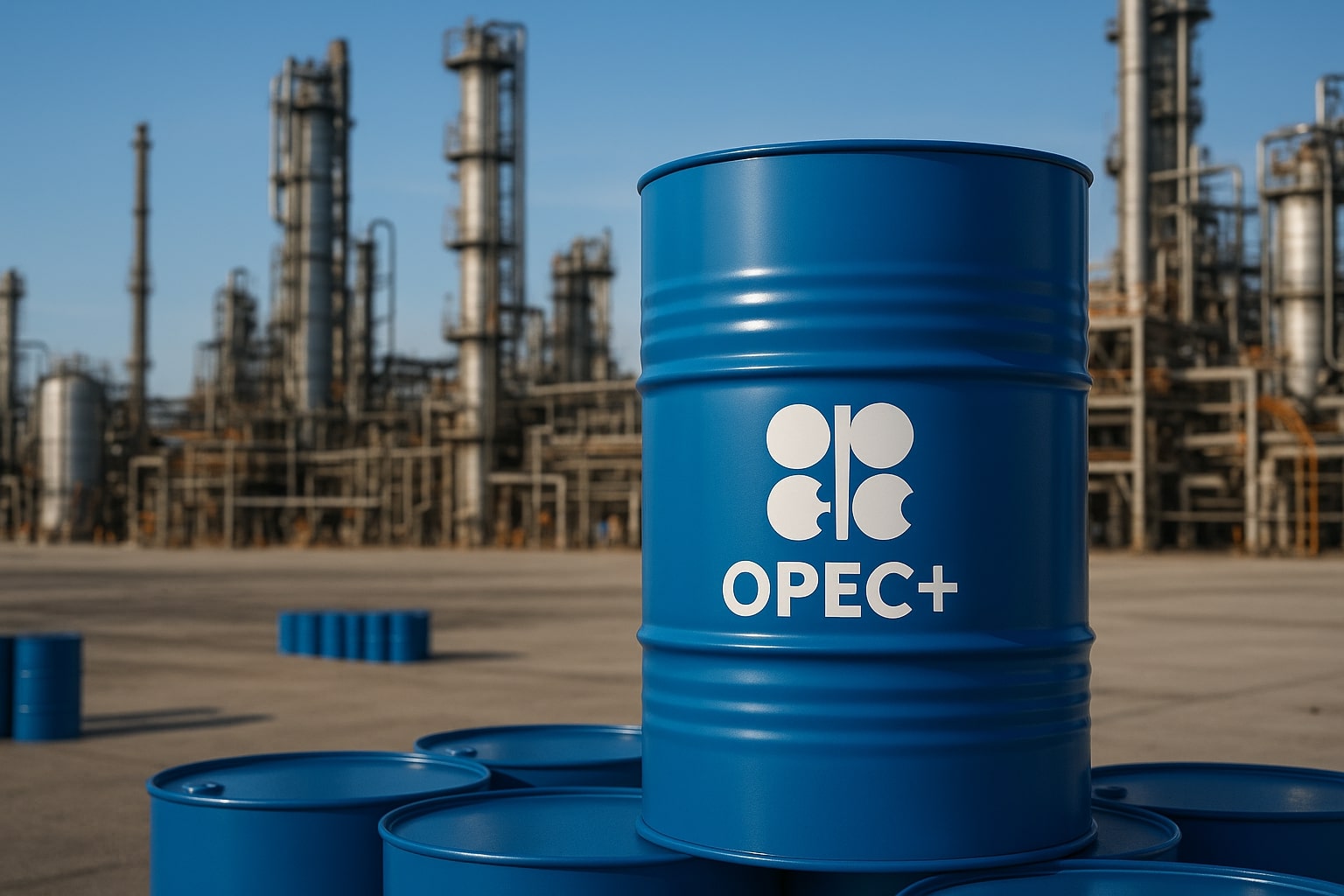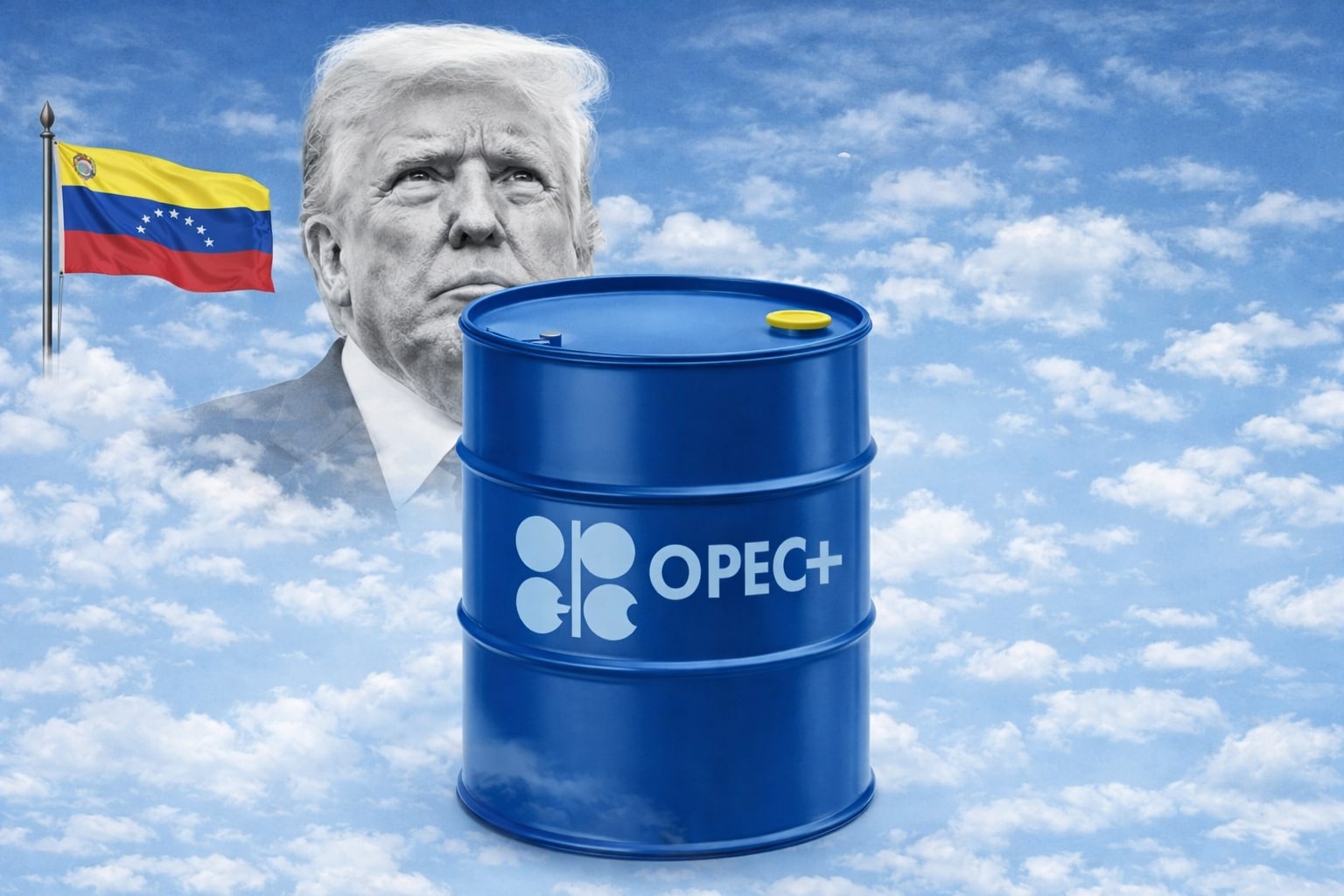
Oil Price Forecast - Crude Holds Near $61–$66 as Trade Breakthrough and Russian Sanctions
WTI and Brent stabilize after last week’s 8% rally, supported by hopes of a U.S.–China trade framework and new sanctions on Russia’s oil giants, while oversupply and record U.S. output cap gains | That's TradingNEWS
Crude Oil (CL=F, BZ=F) Steadies Near $61–$66 as U.S.–China Trade Breakthrough and Russian Sanctions Offset Demand Fears
Oil markets opened the week in consolidation, with WTI Crude (CL=F) trading near $61.74 and Brent (BZ=F) around $66.08, balancing between optimism over a revived U.S.–China trade framework and renewed anxiety over sluggish global demand. After rallying nearly 8% last week, both benchmarks experienced profit-taking in European hours, following the sharp run-up triggered by U.S. sanctions against Russia’s two largest oil producers — Rosneft and Lukoil — set to take effect on November 21. These sanctions temporarily reduced short positioning as traders recalibrated for potential supply disruption from Russia, but oversupply concerns quickly reemerged, dragging prices lower during Monday’s European session.
Russian Sanctions and U.S.–China Trade Framework Set the Tone
The geopolitical landscape remains central to crude’s trajectory. President Trump’s latest sanctions, citing Moscow’s “lack of serious commitment” toward a Ukraine peace settlement, raised fears of curtailed Russian supply. Yet analysts warn the impact may prove limited given Russia’s vast “shadow fleet” of tankers circumventing restrictions. At the same time, U.S. Treasury Secretary Scott Bessent confirmed that Washington and Beijing reached a “substantial framework” preventing the enforcement of 100% tariffs on Chinese imports while suspending China’s planned restrictions on rare-earth exports. The move defused one of the most severe economic flashpoints since 2018, reviving risk appetite and pushing oil, equities, and industrial metals higher. In Asia’s Monday session, WTI briefly reached $61.69 and Brent $66.02, buoyed by optimism over renewed energy demand before easing later in the day.
Profit-Taking Pulls Crude Lower After the Sharpest Weekly Rally Since March
Traders began unwinding bullish positions following the near 9% surge in Brent and 7.7% in WTI last week, when the sanctions headline triggered panic short-covering. As of 7:13 a.m. ET, WTI fell 0.81% to $60.98, and Brent dropped 0.83% to $65.41. The rally’s exhaustion point came as speculators began booking profits and analysts pointed to resurgent American output as the key downside anchor. According to International Energy Agency (IEA) Director Fatih Birol, rising U.S. shale production could cap prices below $60 per barrel by early 2026. S&P Global Commodities concurred, labeling current supply conditions as a “significant overhang,” warning that “without a sharp demand rebound, prices may not hold above $60 beyond Q1.”
OPEC Policy Shifts and Iraq’s Output Negotiations Add New Volatility Layers
OPEC’s internal dynamics remain a destabilizing force. After months of voluntary restraint, the cartel has reversed prior production cuts to regain lost market share, adding incremental supply even as demand stagnates. Iraq, historically OPEC’s biggest overproducer, is currently renegotiating its quota within its 5.5 million bpd capacity, signaling internal friction. Iraq’s Zubair oilfield fire on Sunday had no measurable impact on exports, according to Oil Minister Hayan Abdel-Ghani, who stressed that output flows remain stable. Analysts estimate that any formal quota adjustment could reintroduce up to 250,000 barrels per day of Iraqi oil into the market — enough to pressure Brent below $65 if demand growth fails to accelerate.
Read More
-
Broadcom Stock Price Forecast AVGO Stock Sinks to $324 After $414 Peak – Is $390 the Next Target?
17.12.2025 · TradingNEWS ArchiveStocks
-
XRP Price Forecast: Can XRP-USD Price $1.64 Hold Before a Run Toward $2.50–$3.00?
17.12.2025 · TradingNEWS ArchiveCrypto
-
Oil Price Forecast: WTI at $56 and Brent at $60 as Trump’s Venezuela Blockade Collides With 20% Yearly Slide
17.12.2025 · TradingNEWS ArchiveCommodities
-
Stock Market Today: Dow Outperforms at 48,271 While S&P 500 and Nasdaq Slide on Oracle AI Debt Fears
17.12.2025 · TradingNEWS ArchiveMarkets
-
GBP/USD Price Forecast - Pound Under Pressure as Softer UK CPI Drags Cable Back Toward 1.33
17.12.2025 · TradingNEWS ArchiveForex
Demand Outlook Softens Despite Trade Thaw and Sanctions Support
The IEA forecasts that global oil demand growth for 2025 will slow to 1.2 million bpd, down from 2.3 million bpd in 2024, as China’s post-pandemic consumption stabilizes and OECD economies plateau. While the U.S.–China framework brightens sentiment, traders remain wary of weak refining margins in Asia and stagnant petrochemical throughput in Europe. The OPEC Basket rose 1.61% to $68.33, while Bonny Light tumbled 2.84% to $78.62. The divergent performance underscores uneven regional fundamentals — Middle Eastern grades firmed on geopolitical risk premiums, while African and Atlantic Basin crudes weakened amid surplus cargoes.
U.S. Supply Growth Caps Upside Momentum
The United States remains the single largest swing factor in the global oil equation. Crude output is projected to average 13.7 million bpd this quarter, an all-time record, supported by efficiency gains in the Permian and Eagle Ford basins. Louisiana Light crude rallied 5.31% to $64.06, reflecting refinery demand and export momentum, while Mars U.S. declined 1.34% to $70.71. Storage data from Cushing, Oklahoma, indicate inventories have risen for the third straight week, reinforcing the oversupply narrative that capped last week’s rally. Despite record production, refinery utilization slipped below 88%, suggesting that domestic demand growth may not absorb rising output.
Traders Eye 50-Day Moving Average as Short-Term Pivot
Technically, WTI remains in a fragile recovery phase after rebounding from October’s low near $58.70, the bottom of a prior chart gap. The 50-day EMA around $61.40 has acted as a ceiling in recent sessions. A daily close below $60.50 could reopen downside targets at $58.70–$57.90, where buyers previously defended the gap zone. On the upside, resistance remains heavy at $62.80 and $63.90, with the 200-day EMA near $64.50 marking a key medium-term test. Brent, hovering just above $66, faces similar headwinds with resistance at $67.40 and downside risk toward $62.25, aligning with its previous gap. Technical oscillators show momentum fading; RSI near 47 signals consolidation, not a clear reversal.
Natural Gas (NG=F) Emerges as a Contrarian Play
Amid the crude volatility, Natural Gas (NG=F) surged 4.42% to $3.45, reflecting colder weather forecasts across the U.S. Midwest and storage draw expectations. The divergence between gas and oil markets highlights evolving energy substitution patterns, with gas reclaiming demand from diesel in industrial and power-generation segments. Analysts expect Henry Hub prices could test $3.75 if early November temperatures remain below seasonal averages.
Market Sentiment: From Fear to Fragile Stability
The coordinated combination of sanctions, trade progress, and mixed inventory data produced a highly polarized market. VIX energy volatility readings remain elevated near 29.4, underscoring trader uncertainty ahead of this week’s Federal Reserve meeting and Trump–Xi summit in Seoul. Equity-linked energy ETFs have responded cautiously: the Energy Select Sector SPDR Fund (XLE) rose 1.1%, while oilfield service firms suffered heavy losses — Petrofac collapsed into administration, and Baker Hughes reported robust Q3 earnings on the back of LNG project strength. The contrast underscores investor rotation within the sector: away from high-debt producers toward LNG and downstream assets with stable cash flows.
Outlook: Cautious Recovery With Oversupply Cap
In sum, the global oil balance remains precarious. Sanctions-induced supply shocks provide near-term support, but relentless U.S. production and OPEC’s quota expansion limit any sustained rally. While the U.S.–China thaw temporarily lifts sentiment, the structural problem of oversupply persists, anchored by forecasts of Brent slipping below $60 in early 2026 if global inventories continue to build.
Verdict: Hold — oil remains range-bound between $58–$66 with upside capped by production growth and downside protected by geopolitical risk. A confirmed close above $64.50 (200-day EMA) could trigger renewed bullish momentum toward $68–$70, but absent demand acceleration, the bias stays neutral to mildly bearish heading into November.



















